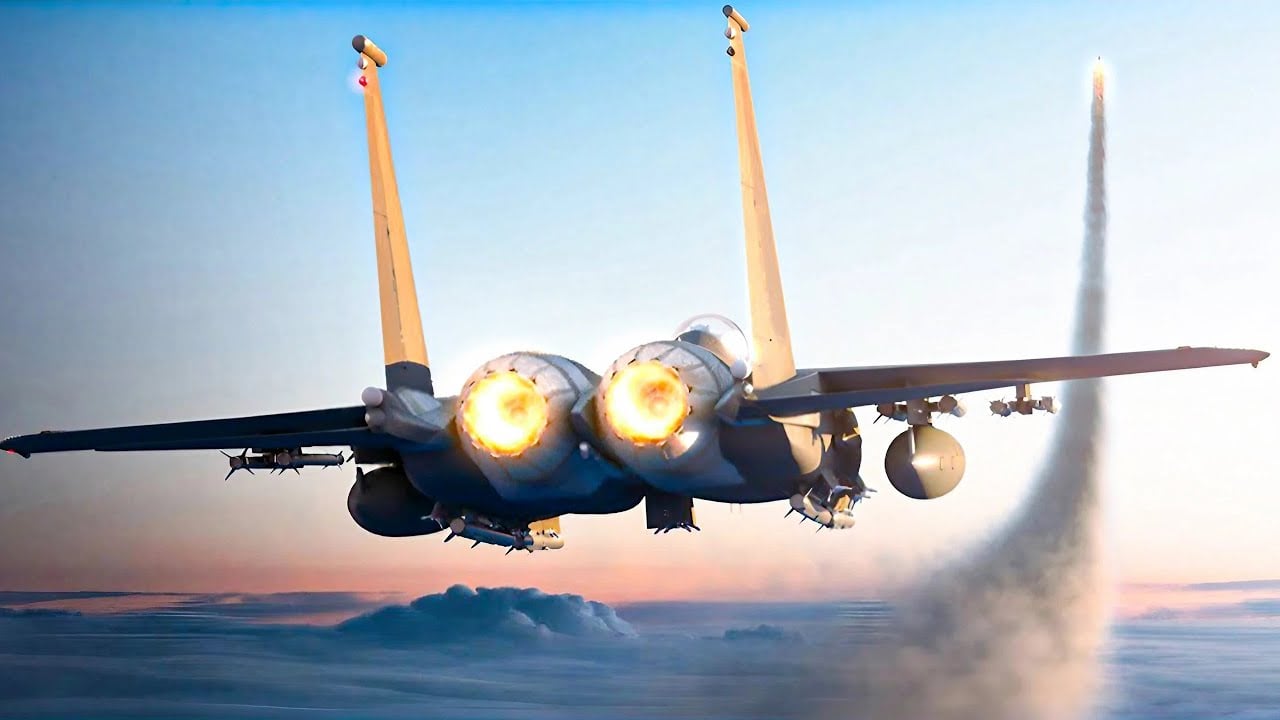Father Time Can't Beat the F-15 Fighter
The F-15 Eagle, which first flew in 1972, remains one of the most successful modern fighters, with over 100 aerial combat victories and no losses. Continuously updated, it recently completed the Initial Operational Test & Evaluation (IOT&E) for the Eagle Passive Active Warning Survivability System (EPAWSS).
Summary: The F-15 Eagle, which first flew in 1972, remains one of the most successful modern fighters, with over 100 aerial combat victories and no losses. Continuously updated, it recently completed the Initial Operational Test & Evaluation (IOT&E) for the Eagle Passive Active Warning Survivability System (EPAWSS).

-This advanced electronic warfare system provides radar warning, geolocation, situational awareness, and self-protection capabilities.
-EPAWSS enhances the F-15E Strike Eagle and F-15EX Eagle II, allowing deeper penetration into contested airspaces.
-Developed by BAE Systems in collaboration with Boeing, EPAWSS represents a significant technological leap, improving the F-15's lethality and combat capabilities against advanced threats.
F-15 Eagle: Upgraded with Cutting-Edge Electronic Warfare System
The F-15 Eagle made its maiden flight in 1972 and entered service four years later. It remains among the most successful modern fighters, with more than 100 victories and not a single loss in aerial combat. Given that it was developed when the United States military was very much involved in the war in Vietnam, it would seem that the F-15 would be the sort of aircraft seen only in a museum, yet that is far from the case.
The platform has been steadily updated and improved—and just recently, it was announced that the United States Air Force had completed the Initial Operational Test & Evaluation (IOT&E) of the Eagle Passive Active Warning Survivability System (EPAWSS), validating the potential capabilities BAE Systems’ advanced system brings to the F-15.
According to the press release, EPAWSS provides critical electronic warfare (EW) capabilities for the F-15E Strike Eagle and F-15EX Eagle II aircraft. It provides instantaneous full-spectrum EW capabilities, including radar warning, geolocation, situational awareness, and self-protection—while the system further enables freedom of maneuver and deeper penetration into battlespaces protected by modern integrated air defense systems.
“EPAWSS was designed for upgradeability and rapid capability insertion,” said Amy Nesbitt, EPAWSS program manager at BAE Systems. ”We’re using agile software development to provide iterative upgrades to fielded EW systemsallowing our customers to defeat future electromagnetic threats.”

EPAWSS has been in development for more than a decade. It was initially developed as a central component of the F-15EX, but it will also be equipped in dozens of the F-15Es.
“EPAWSS is a leap in technology, improving the lethality and combat capabilities of the F-15E and F-15EX in contested, degraded environments against advanced threats,” added Maj Bryant “Jager” Baum, EPAWSS test director for the Air Force Operational Test & Evaluation Center (AFOTEC). “EPAWSS has set the baseline for EW within the fighter community.”
U.S. Air Force fiscal 2025 budget documents show procurement for the program will conclude in 2029, after an investment of $1.8 billion, Air & Space Forces Magazine reported.
Large Force Testing
BAE Systems worked closely with Boeing—the current maker of the F-15EX Eagle II—and the U.S. Air Force, and the initial operational testing phase of EPAWSS began in July 2023. It was employed in an operational setting during the Northern Edge 2023 (NE23) large force exercise test event, while deployed aboard two new F-15EX Eagle II fighters. Low-rate initial production of the system began in July 2022.
“Our close collaboration with the U.S. Air Force allows us to mature EPAWSS cognitive processing capabilities,” said Chip Mosle, program director at BAE Systems. “By incrementally testing and fielding cognitive EW solutions to proven systems such as EPAWSS, we are enabling tactical spectrum overmatch against advanced threats that are unpredictable, evolving, and adaptable.”
The NE23 event tested EPAWSS’s ability to rapidly respond to previously unencountered electromagnetic threats. The tests challenged the system’s ability to process in-mission sensor data, create exquisite techniques, and optimize waveforms in real-time, BAE Systems explained. In addition, the NE23 environment challenged the system to execute the tasks in a dense, unpredictable electromagnetic spectrum at a theater-exercise level.

The capabilities added to the aircraft with EPAWSS have led Boeing to describe the F-15EX as a “4.5-generation” fighter. According to a report from Flight Global, the aerospace firm has delivered six test-variant EXs to the U.S. Air Force, with the first two combat-configured aircraft nearly complete. The air service will turn over the first combat F-15EX to the Oregon Air National Guard’s 123rd Fighter Squadron this summer.
Author Experience and Expertise: Peter Suciu
Peter Suciu is a Michigan-based writer. He has contributed to more than four dozen magazines, newspapers, and websites with over 3,200 published pieces over a twenty-year career in journalism. He regularly writes about military hardware, firearms history, cybersecurity, politics, and international affairs. Peter is also a Contributing Writer for Forbes and Clearance Jobs. You can follow him on Twitter: @PeterSuciu. You can email the author: [email protected]
All images are Creative Commons.
More from National Interest
PAK DA - Russia Is Building a New Stealth Bomber
Houthis Might Have Attacked a Navy Aircraft Carrier - Report


